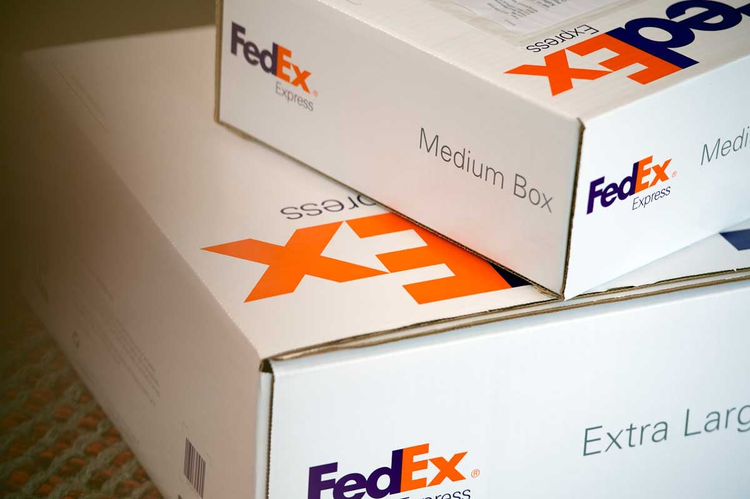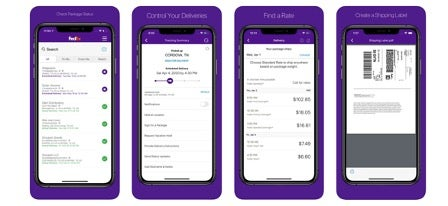FedEx is the engine of e-commerce during COVID-19
With Adobe Experience Cloud solutions, Fedex meets customer needs through data-driven testing, optimization, and personalization.

Shipping and delivery are key parts of every online shopper’s buying journey.
At the heart, sits FedEx Corp., the “engine of e-commerce” at a time when the majority of shopping is done online.
“We sit at the intersection of physical and digital,” says Brie Carere, EVP and chief marketing and communications officer of FedEx. “We actually have to physically move those packages, and we have the power of the data behind them, so that we’re connecting warehouses, fulfillment and upstream manufacturers, all the way through to the consumer.”
Impact of COVID-19 pandemic
According to Carere, there has been an incredible surge in online shopping since the COVID-19 pandemic first spread throughout the United States in March 2020. Data from Adobe’s Digital Economy Index proves this point: COVID-19 gave eCommerce an extra boost of $183 billion. To keep up, FedEx had to expand its capacity and facilities in just a matter of months, which it continues to do to address the deluge in shipping.
Engagement in a digital economy
When COVID-19 hit, FedEx needed to move fast — it had hundreds of content pages that needed to be updated on its website, which is built on Adobe Experience Manager.
“Without Adobe, we would have been at it for weeks. It took just a few days to become fully digital and gave us the ability to be there for our customers. We operate in 220 countries and territories where we’ve had to change service terms, transit times, and pricing in very significant ways at multiple stages. Adobe Experience Manager enables us to effectively communicate.”
Brie Carere, EVP and chief marketing and communications officer of FedEx
The increase in e-commerce over the last thirteen months has significantly boosted website traffic to FedEx.com. Despite an influx of new consumers visiting their site, FedEx is working to help ensure each customer has a personalized experience.
“We are really being thoughtful in leveraging Adobe to create separate journeys for our three core personas: small businesses, retailers and consumers,” Carere says. “And we’re using Adobe Analytics to make sure that what we’re putting on FedEx.com is relevant and maps back to the ROI we’re striving for.”
FedEx also uses Adobe Target to personalize content on FedEx.com, ensuring that small business customers see content that is different than what a large retailer sees, and that consumers get personalized experiences based on their behavior.
According to Carere, there isn’t a channel that FedEx doesn’t use to reach its customers. The company’s strategic pivot over the last few years to evolve from a predominantly B2B organization to also serving consumers has accelerated during the COVID-19 pandemic. The company now focuses on pushing self-service offerings like FedEx Delivery Manager.
Business resilience in a crisis takes long-term planning and agility
According to Carere, she works for a CEO (Frederick W. Smith) who plans five and ten years out. “In his staff meeting, he rarely wants to talk about the next quarter or the quarter after that. He’s talking about three to five years from now,” she says.
As a result, FedEx has been planning an e-commerce strategy for 2026 for a number of years now. For example, the company had already built out an infrastructure to expand capacity, allowing FedEx to quickly add Saturday and Sunday deliveries.
“We’ve already built a flexibility into our system to be able to effectively and efficiently grow into future needs,” she says. “And while we certainly did not anticipate that, in e-commerce, we’d get three years of growth in six months, we were ready for it because we don’t plan on a six-month cycle.”
At the team level, Carere says, agility has been key during the pandemic. She says that the most successful people in business today are those that are flexible, open minded and team players.
“We had to very suddenly and very quickly move more than 85,000 people to work from home. We moved all of our call centers in just two weeks. It’s been that agility and that can-do team culture that has gotten us through the last year.”
Tackling an unprecedented holiday season
The 2020 holiday season offered FedEx an opportunity to get the most out of the changes the company had been making since March to deal with the effects of the pandemic. Online spend during the 2020 holiday season exceeded $188.2 billion dollars, representing 32 percent growth year-over-year (YoY), according to Adobe’s 2020 Online Holiday Shopping Report. FedEx prepared in advance to provide the best possible service to business and consumer customers during this key shopping period, adding 70,000 team members and continuing to evolve its digital capabilities.
FedEx encouraged consumers to take control of their shipments with FedEx Delivery Manager. FedEx Delivery Manager gives people the insight into what’s coming, as well as tools to redirect orders to retailers like Walgreens and Dollar General through pickup points. Ninety-two percent of the United States is covered within five miles.

While FedEx Delivery Manager existed prior to COVID-19, Carere says the company has been enhancing it throughout the pandemic to better meet people’s needs.
For instance, “The increase in e-commerce volume helps us put an emphasis on visibility and predictability, and increasing the number of notifications we give consumers,” Carere says. Instead of telling a consumer, “Your package might be late,” FedEx Delivery Manager can now share real-time updates, such as “Your package is going to be held because of…” This increase in transparency brings empathy and understanding from consumers.
This transparency is also at the center of a campaign FedEx launched around the holidays, dubbed “The Shipathon”, which highlighted the obstacles of the 2020 holiday season being bigger than ever before, and pushed consumers to the FedEx Holiday Guide for tips.
FedEx is focused on supporting their evolving customer from SMB to the enterprise through digital transformation. Harnessing the power of digital and data science, investing in marketing technologies while aligning their people and processes, has enabled FedEx to develop a scalable personalization strategy across its digital touchpoints worldwide. Through Adobe Experience Cloud solutions, they are meeting customer needs through data-driven testing, optimization, and personalization. FedEx is seeking to globally deliver the right experience to the right person in their preferred channel.